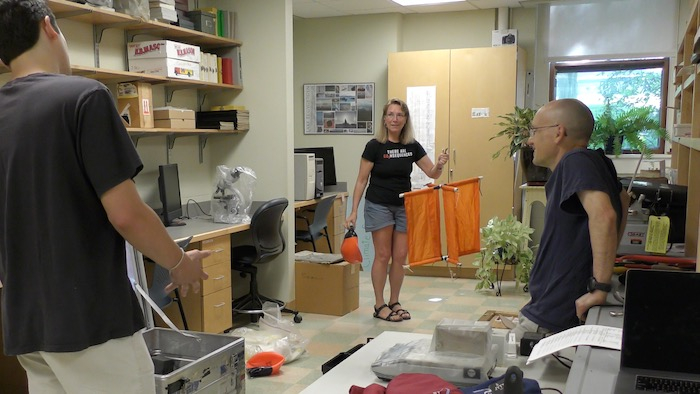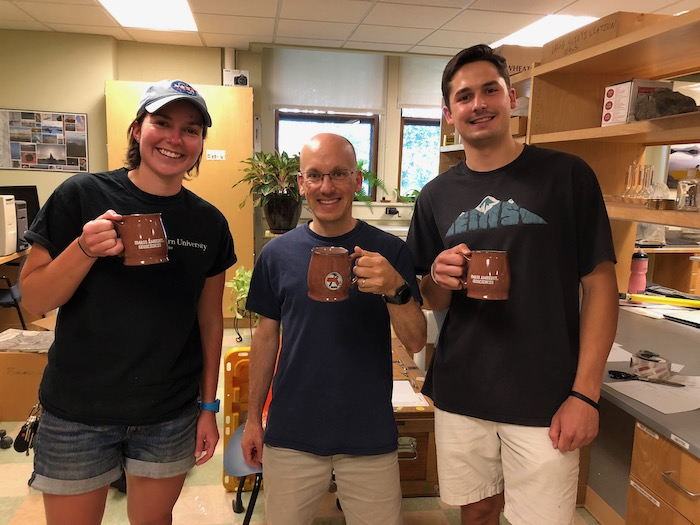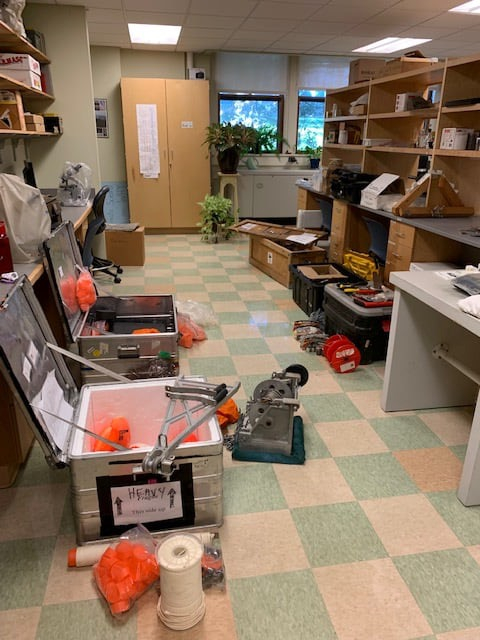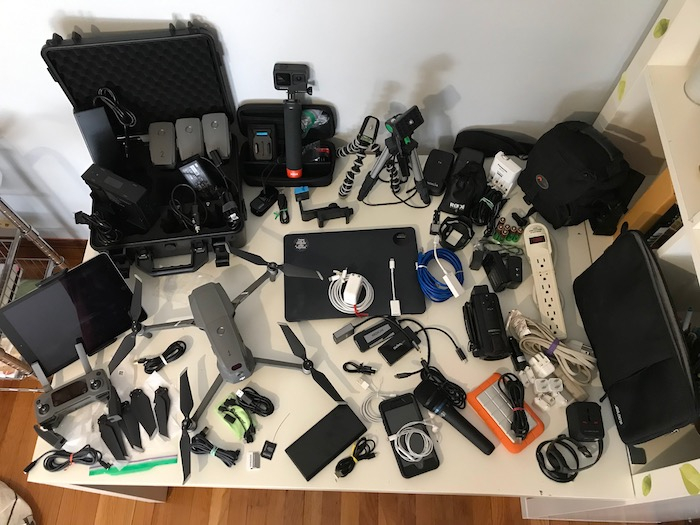Packing up
In less than a week, we will be off to Norway to begin our Arctic adventure! It’s been a busy week finishing up the school year and making preparations for the trip. I thought I’d post a short journal post today about all the gear!
I got to spend Friday with Julie, Zander and Kelly as the scientific gear was checked, tested and inventoried in preparation for shipping. We’ll ship most of the science equipment directly to Longyearbyen, in Svalbard, where it should be waiting for us when we arrive there on July 6.


Going to the lab to organize the equipment gave me a much clearer picture of exactly what we’ll be doing. There are 5 main sets of data we need to be prepared to collect as we focus our study of the glacier, and, in particular, on the upwelling plumes that emerge from the glacier face:
BathymetryBathymetry is the study of the depth of water in the ocean. - Mapping the seafloor depth in the fjord. This will help us understand how the glacier is receding and how sediment deposition patterns are changing over time.
CTDA research tool that is submerged in the water to measure conductivity (salinity), temperature, and depth. (“Conductivity / Temperature / Depth”) - Taking an array of oceanography data around the glacier face will help us understand how the upwelling plume behaves. Conductivity will tell us the salinity, and the CTDA research tool that is submerged in the water to measure conductivity (salinity), temperature, and depth. unit can also measure the turbidity (the cloudiness) of the water. We might be able to create a sort of 3-D map of the fjord which can be used to visualize the interactions between the glacier face and the ocean.
Current Velocity Meter - We’ll be measuring the speed and direction of the water coming off the glacier face at the water surface.
Water SamplingSampling refers to the process of selecting units or portions of a larger group that will be studied in order to answer questions about the larger group. The units can be people, water samples, ice cores, or any other appropriate object. Participants will explore the meaning of sampling and how it impacts experimental design and explore factors that define and limit sampling in the variety of projects visited during the expedition. They will consider how results from the chosen samples are used to describe the bigger target of a project's study. - collect samples of water at varying depths. We will use a vacuum pump to filter the sediment out of the water, so we can characterize how sediment is flowing through the water.
Drone - Get aerial video and photos of the area in and around the upwelling plume, as well as other features of the glacier and surrounding area to document our work.
Each of these has its own set of instruments, batteries, cables, etc. All in all we packed up 5 large boxes to be shipped. Tomorrow they will leave UMASS and get shipped to Longyearbyen.

Documenting our Expedition
One of my main roles in this adventure is to keep documenting our work. I intend to collect lots of video, photos, and of course drone footage. I am in the midst of packing up my own gear, and I’m a bit overwhelmed by the sheer number of batteries, cords, mounts, etc.
Because most of the batteries are Lithium ion batteries, they must be taken in my carry-on. Fortunately I was able to squeeze it into a bag just small enough to meet the Delta Airlines requirements.
But here’s a fun little shot of all the various electronic equipment I’ll be taking, including the drone, video camera, GoPro, iPhone, iPad, backup hard drive, backup battery, tripods, and various cords and adapters:

I’ve been taking some time to learn how to fly the drone. It’s so much fun to fly! It definitely takes a lot of practice to master the various movements of the drone, which can move independently from the camera.
Here’s my first attempt at taking a wide panoramic-type shot of the region around Millennium Park in Boston. You can see the Charles River, and at the end you can make out the skyline of Boston. I obviously need more practice to learn how to smooth out the motion of the drone and the camera, so thankfully I have this coming week to continue practicing!


Comments